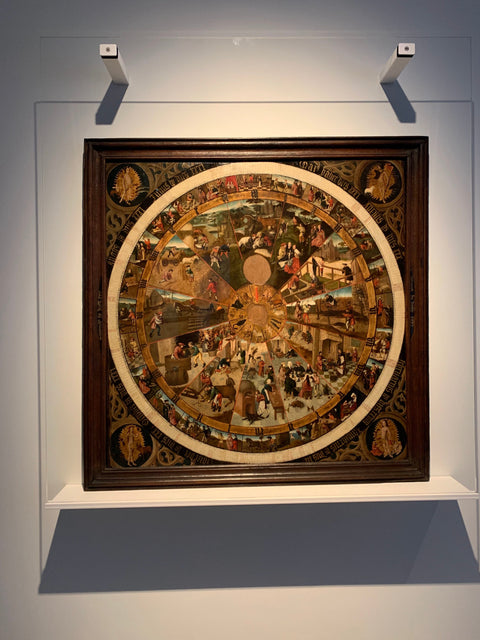An Enigmatic Work of Art
At M-Museum Leuven, visitors can admire the mysterious Calendar Dial, a late 15th-century painting whose creator and exact date remain unknown. With no artist’s signature or inscription, its origins are hidden in time, but the costumes of the figures suggest it was painted around 1500.
From Functional Artefact to Artistic Treasure
Although now displayed as art, the Calendar Dial originally served as the dial of a clock with an integrated calendar and astrological elements. The clock mechanism has been lost, but the oak panel with dozens of painted tableaux is remarkably well preserved, showcasing a wealth of medieval imagination and detail.
Symbolism and Meaning
The work is organised into concentric circles, each serving a purpose:
-
Days and months of the year
-
Astrological planets believed to influence destiny
-
Human behaviour and professions linked to celestial bodies
For example, those born under Saturn’s influence were thought destined to live as beggars or cripples. In medieval times, time was viewed as cyclical, repeating endlessly, while astrology was considered central to understanding life and fate.
Changing Views of Time
By the 18th century, astrology was dismissed as superstition, and the cyclical view of time gave way to a linear perspective. This cultural shift allowed people to develop a deeper appreciation of history and heritage, highlighting how dramatically worldviews evolved.



